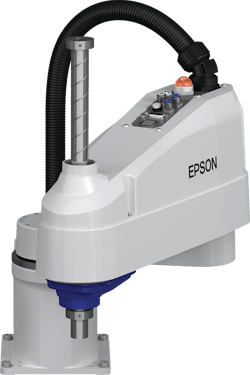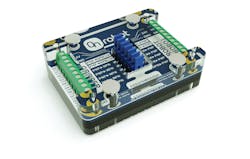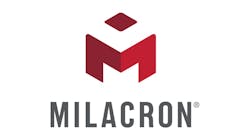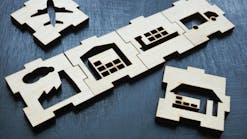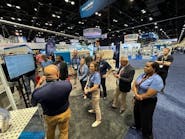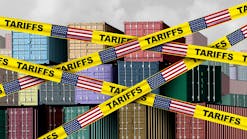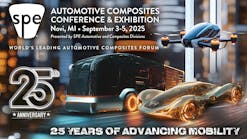Epson Robots and Kawasaki Robotics released new robot models that will likely find uses in the plastics industry and end-of-arm-tooling (EOAT) manufacturer OnRobot announced a converter kit that lets its devices work on a wide range of robots without special programming.
EPSON ROBOTS
The company is expanding its extensive SCARA robot offerings with four new models that feature faster cycle times and lower cable duct profiles and are designed for hard-to-reach work cells.
The new robots are the LS3-B, LS6-B, LS10-B and LS20-B. Epson sells more than 300 SCARA models.
“For the last several years, our LS- Series Robots have been the robot of choice for high-performance, low-cost automation,” said Gregg Brunnick, director of product management for Epson Robots. “As the No. 1 SCARA manufacturer in the world, our customers can expect continuous improvement in performance and usability.”
The LS10-B became available in June. The other three will begin shipping later this summer and early fall.
The LS10-B comes in versions with reaches of 2 feet, 2.3 feet and 2.6 feet. Payload is up to 22 pounds. It has fast acceleration and deceleration rates, fast cycle times and comes with the Epson RC+ development software that makes it easy to customize movement. It also has a built-in camera cable, new top-of-the arm layout for enhanced usability and an encoder that does not use a battery.
The LS10-B is also available in an ISO 4 cleanroom version and has a long list of options, including vision, API software, a teach pendant and customizable graphical user interfaces.
The LS6-B can reach 1.6 feet, 2 feet and 2.3 feet and handle a payload up to 13.2 pounds.
Additional details about the LS3-B, LS6-B and LS20-B will be released later, an Epson spokesman said.
Epson also introduced the IntelliFlex Parts Feeding System, which can separate and handle a wide variety of parts, which reduces costly and time-consuming feeder retooling, the company said.
The system uses Epson’s IntelliFlex software and vision guide. It can handle parts from 0.2 inch to 1.6 inches in size, including simple or complex parts and delicate materials.
“The IntelliFlex Feeding System meets a growing need for high-mix, low-volume parts singulation,” Brunnick said. “The integration of Epson robots, feeder and vision system into a single development environment dramatically reduces development time, providing manufacturers operational efficiency with quick part changeovers.”
The system uses a point-and-click interface to reduce setup time. It has a smart auto-tuning feature to automatically adjust feeder parameters for new parts. It has directional, multi-axis vibration technology to optimize part control.
KAWASAKI ROBOTICS
Kawasaki has added a larger, more powerful model to its dual-arm collaborative SCARA series called the duAro2.
The new robot’s vertical stroke (Z axis) is 1.8 feet and payload is 6.6 pounds in each arm; its maximum reach is 2.6 feet. Each arm has four axes. The earlier duAro1 model has a 0.5-foot vertical stroke, 2.5-foot maximum reach and 4.4-pound payload per arm.
The robot is designed to fit into about the same space as a human.
The company said the duAro1 is designed for assembly, material handling, inspection and machine tending. The improved reach and payload make the duAro2 suitable for additional tasks, such as packaging and rack loading.
The duAro2 has a slim cart that permits installation in tight spaces. The two arms are operated by one controller that can be integrated inside the cabinet or separated from the robot via cables. The arms are independent and can perform coordinated, human-like movements.
Programming is through a wireless tablet. The controller is an F61 built by Kawasaki for the duAro robots and has 16 megabytes of memory. Movement can also be taught by hand-guiding its arms.
The robot’s drive system is full digital servo.
ONROBOT
OnRobot launched its Digital I/O Converter Kit designed to make integrating grippers with robot arms easier for robot users.
Mismatched I/O signals between the (EOAT) and the robot arm often occur because different robot arms understand I/O signals differently. The new converter kit converts NPN signals to more commonly used PNP signals, and vice versa. This means that users do not have to write programming code to work around the problem of mismatched signals, which speeds deployment.
Kristian Hulgard, GM for OnRobot’s Americas division, described the converter kit as a “Tier 1 integration” product and said it represents an important milestone in the company’s goal to become an “all-in-one solutions provider” worldwide. Some 20 percent to 30 percent of OnRobot’s sales are in North America.
The kit also eliminates the need to have communications go through another device, such as a PLC, to process the data.
The kit works with OnRobot’s RG2, RG6, Gecko and VG10 grippers with a wide range of collaborative and traditional robot arms. The small converter device is an out-of-the-box solution for Kuka, Fanuc, Yaskawa, Doosan, Nachi and Techman robot arms.
An adapter plate to convert the OnRobot standard mounting flange to other robots is included in the converter kit.
Ron Shinn, editor
Epson Robots,
Carson, Calif., 562-290-5910, www.epsonrobots.com
Kawasaki Robotics (USA) Inc.,
Wixom, Mich., 248-446-4100, https://robotics.kawasaki.com/en1/
OnRobot Americas,
Dallas, 469-442-9370, www.onrobot.com
Ron Shinn | Editor
Editor Ron Shinn is a co-founder of Plastics Machinery & Manufacturing and has been covering the plastics industry for more than 35 years. He leads the editorial team, directs coverage and sets the editorial calendar. He also writes features, including the Talking Points column and On the Factory Floor, and covers recycling and sustainability for PMM and Plastics Recycling.
